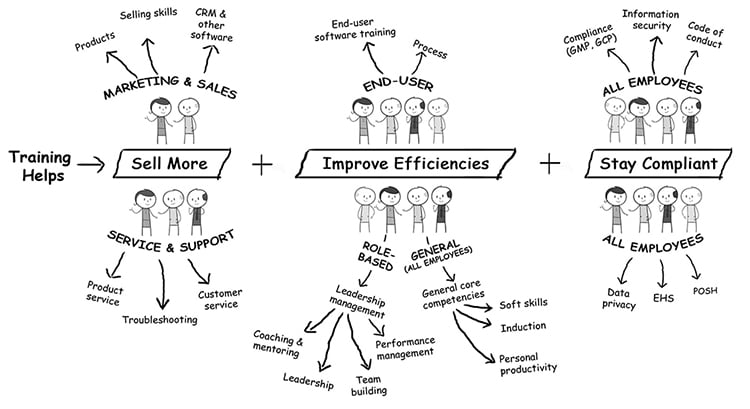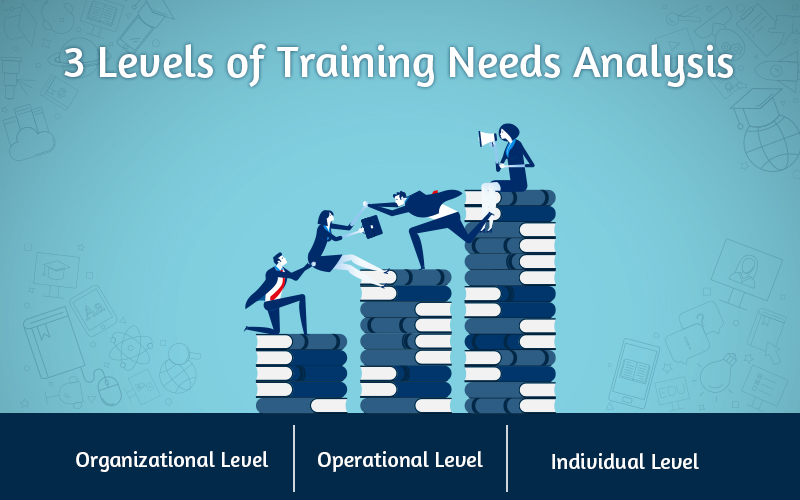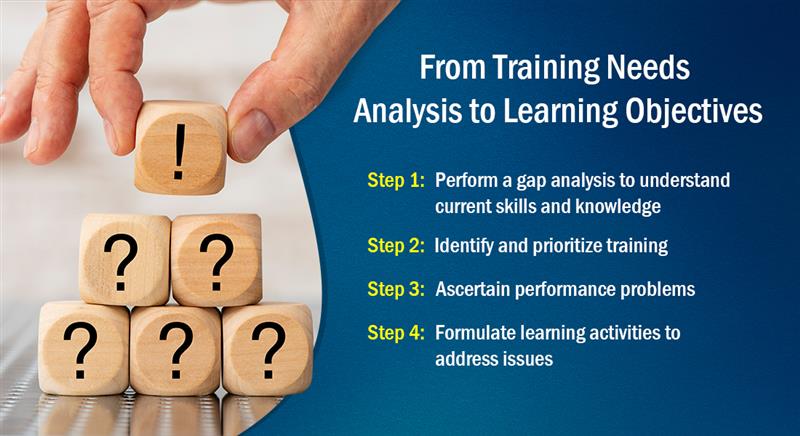Methods to Identify Training Needs – Part 5

In this beginner’s series, we’ve discussed what training needs analysis is, its benefits, levels, and the steps to conduct it. When considering a corporate training program for your organization, the first step you need to take is Training Needs Analysis. So far we’ve understood that training needs analysis helps identify performance needs, which can be addressed by training to meet organizational goals. Ultimately, this results in improving the productivity, profits, and service quality of an organization.
Explore eLearning trends to offer effective corporate training.
Identifying training needs is a process of information gathering. Data collection is instrumental in understanding how each employee’s knowledge, skills, and abilities can be improved to meet organizational results.
This part of the series details four methods for conducting training needs analysis.
4 Methods for Conducting Training Needs Analysis
- Surveys
- Observations
- Interviews
- Customer Feedback
→ Download eBook: Become an eLearning Champion!
Take a look at each method, including their benefits and limitations.
Effective Ways to Gather Data for Training Needs Analysis
1. Surveys
The simplest way to unearth training needs is to conduct surveys or polls with a sample pool or all the employees of your organization. Surveys help find out performance deficiencies in specific areas in each function/department. To conduct a survey, you can prepare a questionnaire and circulate among your employees. The questions in the survey should focus on the specific skills your employees need to master/need help with to achieve your organizational goals.
You can use different question formats such as open-ended, close-ended, and Likert scale.
|
Pros and Cons of Surveys |
|
| Pros | Cons |
| Reach a large number of employees quickly | May not go deep into the reasons behind persistent issues |
| Inexpensive | Need enough time to develop an effective and detailed questionnaire |
| In case of anonymity, responses are given without fear and hesitation | Accurate responses might not be forthcoming |
| Easy to analyze, summarize, and report | |
Most learning management systems (LMSs) will let you generate surveys or polls and assign to a group of employees or individuals, along with a set date for completion.
2. Observations
This second method of data collection for training needs analysis can tend to become subjective, and is possible only in a formal work setting. Training managers or supervisors watch employees on the job to identify performance gaps in their skills/behavior. Observation also yields valuable data on employee priorities, perceptions, and performance.
|
Pros and Cons of Observations |
|
| Pros | Cons |
| Less interruption to regular workflow | Feedback can be unstructured; more anecdotal |
| Helps generate real-life data | Need an impartial, expert observer with process and domain knowledge (personal feelings of the observer can cloud judgement) |
| Employees may feel “spied on”; can be obtrusive | |
| Sometimes, results may deviate when employees know that ‘observation is ON’ | |
3. Interviews
Interviews allow you to collect data on performance gaps while talking with each employee or a group of employees. This can be formal or informal. You can conduct interviews in person or by phone, at work locations, or anywhere. Sometimes, you can interview the representative of the work group.
| Pros and Cons of Interviews | |
| Pros | Cons |
| Easy to identify performance issues of a group/team and explore possible solutions | Can be time-consuming |
| Immediate feedback is possible | Difficult to analyze and quantify results |
| Need an experienced interviewer to generate data without making the interviewee self-conscious | |
| In a group, reserved employees might shy away from voicing their opinions | |
4. Customer Feedback
This is a very important way to gain insights on the training needs of your customer-facing teams – be it the sales technicians, service desk, or more. You get it straight from the horses’ mouth! Performance deficiencies can’t be hidden with customer feedback. They specifically indicate improvement areas. However, you need to formulate each question in the feedback form so that it is directed toward a specific service or performance.
| Pros and Cons of Customer Feedback | |
| Pros | Cons |
| Can make improvements with constructive feedback | Low response rates |
| Get valuable insights about your target learners | May not give enough time for feedback |
| Need responses from a large customer demographic to get the true picture | |
When you analyze training needs through these methods, you can decide which particular knowledge, skills, and abilities (KSAs) are required to improve your workforce performance through corporate training.
Parting Thoughts
Conducting a training needs analysis is very crucial to not just roll out the best corporate training program but also ensure that your energies are spent in the right direction! For example, a performance problem might be due to a bad boss or inadequate motivation. In such cases, it pays to address those issues rather than looking to training to do the magic. And we leave you with a peek of what training can help you solve!






